This article will explain the steps required to setup and trigger an activity notification.
NOTE: In order to add Notifications, the person setting these up must have the
appropriate role and functional permissions to view the notification polices
and queue pages, as well as have the appropriate notification entity rights to
view, add, delete, and edit notifications.



For this document, we will assume the appropriate Account Role has already
been established.
Adding Notifications and Policies:
You can set up imPowr to receive notifications, like alerts, any time data is
added or changed.
Note: Notifications can only set up for actions which are captured in the
Audit Trail (System > IT Management > Audit Trail)
- Login to your imPowr website.
- Go to the Performance menu
- Click on Notification Policies in the Communication section
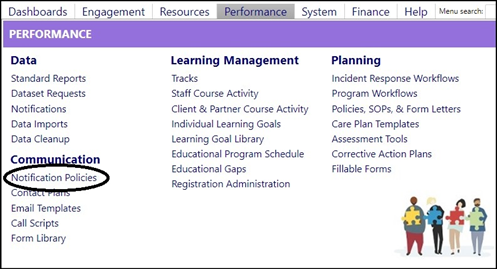
Entering a Notification Policy
- Click New.

- Select the kind of notification you would like to create and click Create.
In this case, click on the Create button on the Activity Notification row.
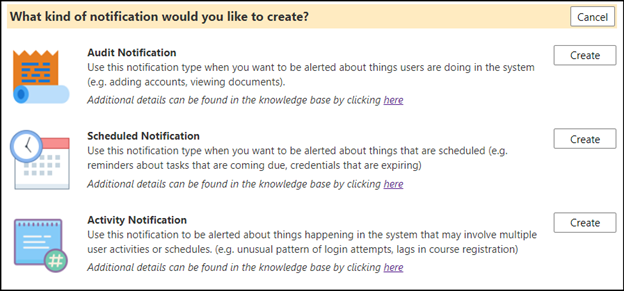
Activity Notifications
These kinds of notifications are triggered by events which occur in the system
and may involved multiple user activities or schedules, such as managers being
notified of cancelled classes for their direct reports, repeated failed login
attempts, etc.
Select the Notification Sub-type
Select the type of Scheduled Notification you want to create by highlighting
the type from the list of Notification Sub-Types, and clicking on Select.
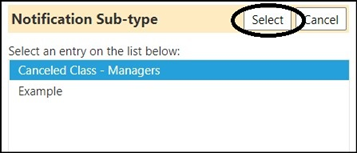
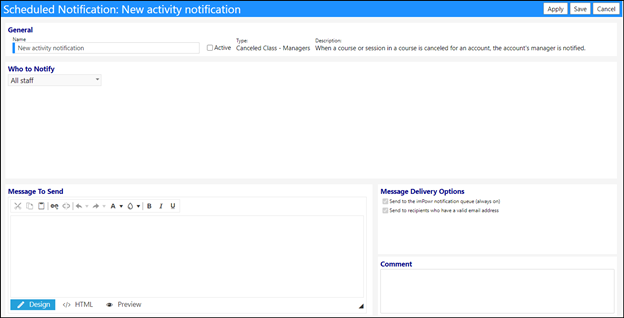
Enter the Name
- Enter the Name of the new Notification. The Notification defaults to New activity notification, but you can overwrite that.

- Check if the Notification is Active (if left unchecked, the notification will not be implemented).

Select who to send the notification to
- Select Who to Notify by making a selection from the drop-down list.
Select from:
- All Staff
- Only Staff on this list
- Staff not on this list
All Staff – this selection will send a notification to all staff members in
your organization.
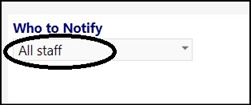
Only Staff on this list – Once you select this, click on Apply to activate
the rest of the form. This selection allows you to select specific staff
members.
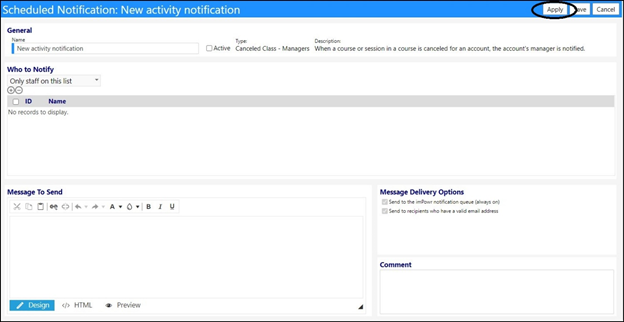

-
Click on the ‘+’ to add Staff Members
- Check the box to the left of the Staff Member’s name.
- Click Save.

NOTE: multiple people can be notified.
To Delete a Person to be Notified, check the box to the left of the
selection and clicking on the ‘-‘ button.
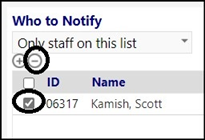
Staff not on this list – this selection will allow you to send the
notification to all members of your staff, EXCLUDING those who you have
selected.

-
Click on the ‘+’ to add Staff Members to be excluded from the notification.
- Check the box to the left of the Staff Member’s name.
- Click Save.

NOTE: one or more staff members may be selected.
Enter a Notification Message
- Enter your Message to Send.
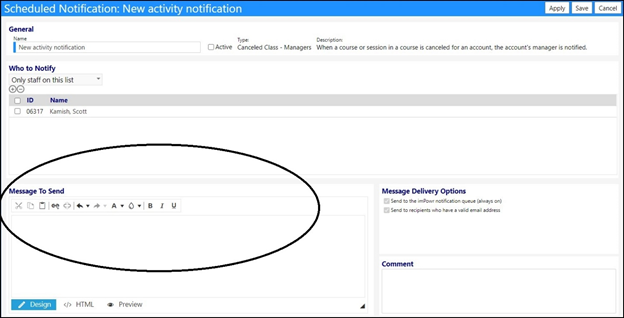
Example:
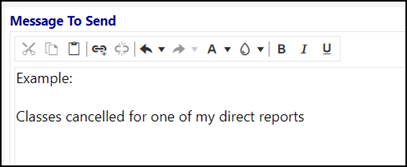
Select Message Delivery Options
- Message Delivery Options have already been selected.

- The **Send to the imPowr notification queue **(always on) defaults to being selected and cannot be de-selected.
- Select the **Send to recipients who have a valid email address (always on) **so only users with a valid email address will receive the notification.
Enter a Comment
- Enter a Comment about your Notification Policy if desired.

NOTE: this comment does not display anywhere except in the list of
Notification Policies.
Save your Notification Policy
- Click Save.
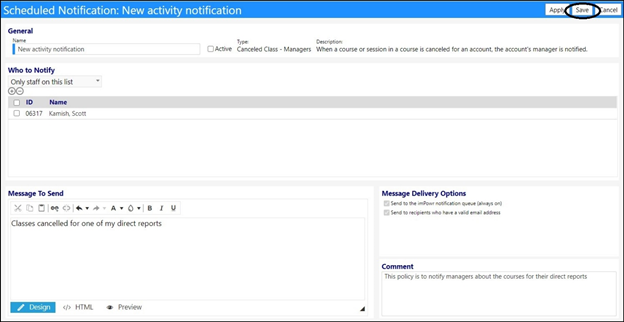
Notification Policies List
The New Notification Policy now appears in the Notification Policy List under
both the All tab and the Activity tab:

Activate the Notification
If the notification is not already activated for use…
- Click on the Notification ID.
- Check the Active box, above the Notification Name.

- Click Save.
The notification is now saved and activated (i.e., ready to be triggered).
Triggered Activity Notifications
Once the notification policy for an Activity Notification is triggered, it
will not only send the notification to the intended recipient(s), but that
sending will also be captured in the Notifications List.
In the above example, any time a course is cancelled for one of his direct
reports, Scott Kamish will receive a notification informing him of the
cancellation.
Notifications List
Whenever a Notification is created, it appears on the Notifications page (Go
to the Performance menu and click on Notifications in the Data
section),:

The Notifications page displays the date the Notification was sent, to whom,
the related entity and the source.
Users can choose to display All Notifications for a specific time frame, for a
specific Recipient, for a specific Audit Event (Related Entity), or a specific
Triggering Entity Event (Source Policy).
They can also choose to only display:
- Notifications sent to me
- Notifications about my account
- Accounts I case manage, or issues I submitted or own

Viewing the Notifications List
The sent Notification appears in the list of notifications.

NOTE: the “New” indicator to the left of the Notification ID indicates the
notification is new and has not been viewed yet.
Looking at the list, we can see Organization 06375 was deleted and that the
notification was generated from the Test Audit Notification (i.e., the Source
Policy).
- Clicking on the Notification ID, the details of the notification can be viewed, displaying the message that was entered as well as the source of the notification:
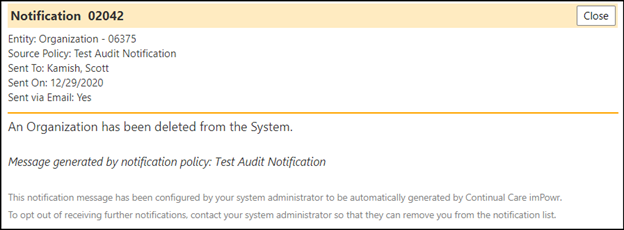
Once read, the ‘New’ changes to a checkmark, indicating the notification has
been viewed:

Viewing the Audit Trail
Looking at the Audit Trail (Go to the System menu and click on Audit
Trail in the IT Management section).
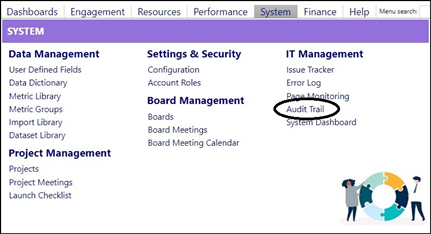
We can view the name, date, and time the action took place (when the
notification was triggered), as well as the person who performed the action
(in this case, it was the person who deleted the organization):
Note: the Audit Trail also captured when the notification policy was
created and changed:
